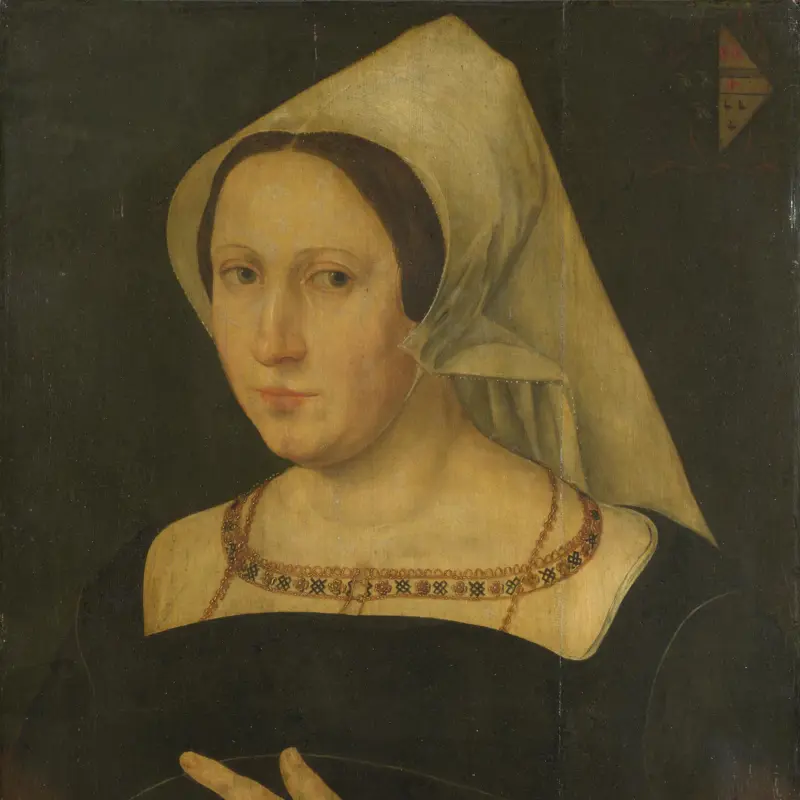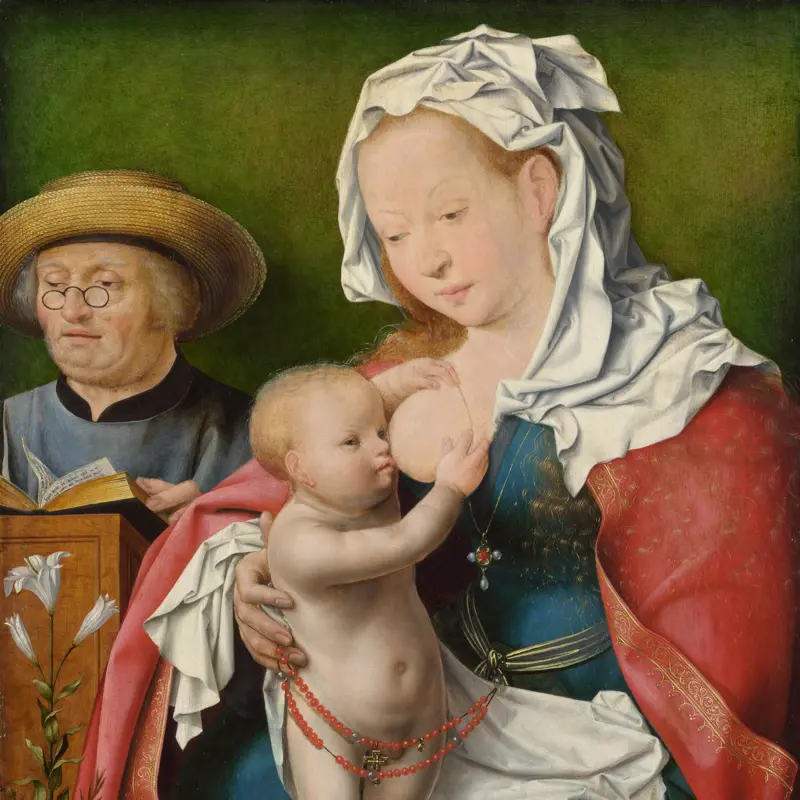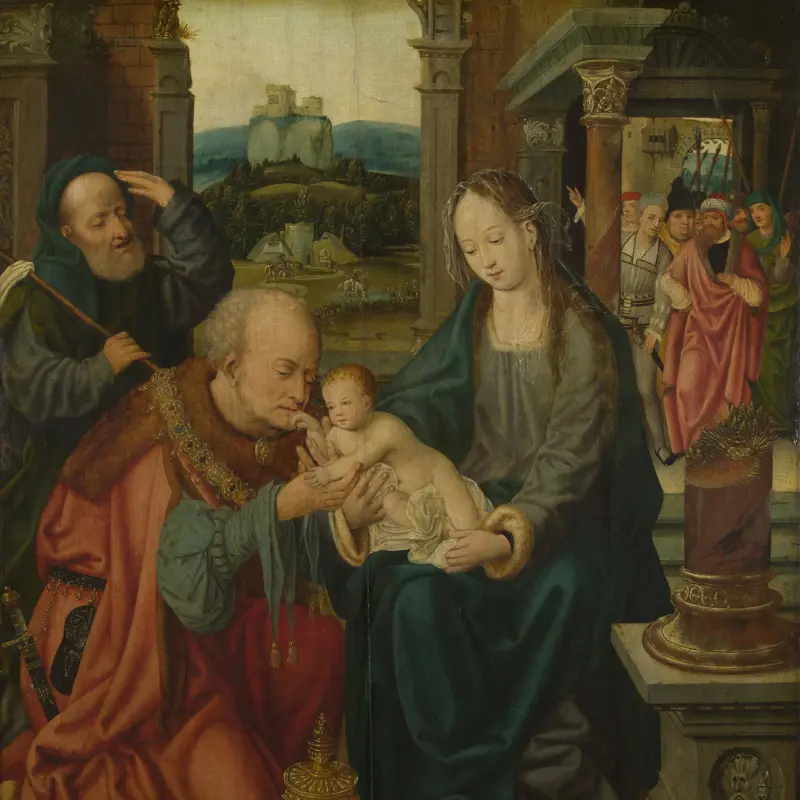Follower of Joos van Cleve, 'The Virgin and Child with an Augustinian Canoness', after 1530
About the work
Overview
A woman dressed in the white habit of an Augustinian canoness kneels in front of the Virgin Mary and Christ. Mary is seated on a low, L-shaped brick wall topped with turf, with Christ perched on her knee. He holds a string of red beads with a gold tassel on one end and a yellow ring – perhaps a teething ring – at the other.
Scattered buildings sit beside two stretches of water in the background; the one on the right is a watermill. People are boating, while others walk and ride along the roads on either side of the water. In the far distance on the right we can see the spire of a church.
We don‘t know who the artist or the patron was. Augustinian canonesses, or ’White Ladies', had many houses in Brabant and Flanders. Nothing is known of this panel’s history before its presence in the London collection of the MP and silk merchant Wynn Ellis (1790–1875).
Key facts
Details
- Full title
- The Virgin and Child with an Augustinian Canoness
- Artist
- Follower of Joos van Cleve
- Artist dates
- active about 1511; died 1541/2
- Date made
- after 1530
- Medium and support
- oil on wood
- Dimensions
- 33.6 × 24.6 cm
- Acquisition credit
- Wynn Ellis Bequest, 1876
- Inventory number
- NG945
- Location
- Not on display
- Collection
- Main Collection
- Previous owners
Provenance
Additional information
Text extracted from the ‘Provenance’ section of the catalogue entry in Lorne Campbell, ‘National Gallery Catalogues: The Sixteenth Century Netherlandish Paintings: With French Paintings before 1600’, London 2014; for further information, see the full catalogue entry.
Bibliography
-
1945Davies, Martin, National Gallery Catalogues: Early Netherlandish School, London 1945
-
1955Davies, Martin, National Gallery Catalogues: Early Netherlandish School, 2nd edn (revised), London 1955
-
1987Davies, Martin, National Gallery Catalogues: The Early Netherlandish School, 3rd edn, London 1987
-
2001
C. Baker and T. Henry, The National Gallery: Complete Illustrated Catalogue, London 2001
-
2014
L. Campbell, National Gallery Catalogues: The Sixteenth Century Netherlandish Paintings: With French Paintings before 1600, 2 vols, London 2014
About this record
If you know more about this work or have spotted an error, please contact us. Please note that exhibition histories are listed from 2009 onwards. Bibliographies may not be complete; more comprehensive information is available in the National Gallery Library.



